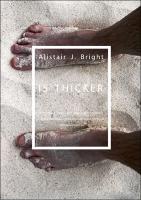Blood is thicker than water
Amerindian intra- and inter-insular relationships and social organization in the pre-Colonial Windward Islands
Author(s)
Bright, Alistair J.
Collection
Dutch Research Council (NWO)Language
EnglishAbstract
This study represents a contribution to the pre-Colonial archaeology of the Windward Islands in the Caribbean. The research aimed to determine how the Ceramic Age (ca. 400 BC – AD 1492) Amerindian inhabitants of the region related to one another and others at various geographic scales, with a view to better understanding social interaction and organization within the Windward Islands as well the integration of this region within the macro-region. An island-by-island study of some 640 archaeological sites and their ceramic assemblages provided insight into settlement sequences, patterns and micro-mobility through time, besides highlighting various configurations of sites spread across different islands that were united by shared ceramic (decorative) traits. By extending the comparative scope of this research, possible material cultural influences from more distant regions could be suggested. While Windward Island communities certainly developed a localized material cultural identity, they remained open to a host of wide-ranging influences outside the Windward Island micro-region, flexibly realigning themselves particularly with numerous mainland South American communities in Late Ceramic Age times (ca. AD 700-1500).
Keywords
Caribbean archaeology; island archaeology; household archaeology; TaínoPublisher
Sidestone PressPublisher website
https://www.sidestone.com/Publication date and place
Leiden, 2011Imprint
Sidestone Press DissertationsClassification
Archaeology


 Download
Download Web Shop
Web Shop